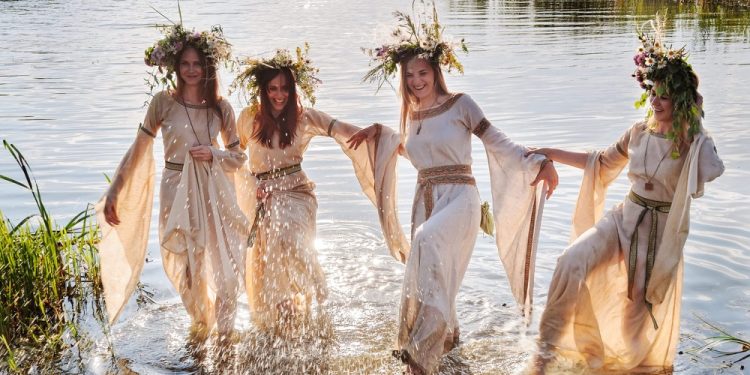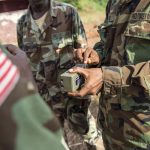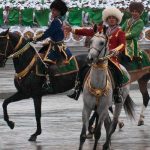
Kupala Night
Kupala Night, also known as Kupalle (in Belarus), Ivan Kupala (in Russia), and Ivan Kupalo (in Ukraine), is a Slavic holiday traditionally observed on the shortest night of the year. This places its traditional observance on the Gregorian calendar around June 21st through June 24th in the Czech Republic, Poland, and Slovakia.
In Belarus, Russia, and Ukraine, this holiday was traditionally observed on the Julian calendar around July 6th or 7th. This is a day on which several different Slavic rituals are held, including young women weaving wreaths to predict their future marriage, setting these wreaths afloat in a symbolic bid for fortune and happiness, and couples jumping over bonfires.
It’s also a holiday that holds many superstitions, as some people believe it’s the night when malevolent spirits are on the prowl.
The History of Kupala Night
The origins of this holiday go back thousands of years to a time when ancient people celebrated the peak of summer at the end of June. Kupalo and his sister Kostroma represented summer fertility, and people sang songs to them and jumped over bonfires.
This was an annual celebration of the summer solstice—a pagan tradition that would become infused with symbols from Christian traditions. According to legend, Kupalo and Kostroma were twins born to Simargl—the god of fire, and Kupalnitsa—the goddess of the night.
When they were children, they ran into a field to listen to two birds—Sirin, the bird of sorrow, and Alkonost, the bird of joy. Kostroma listened to Alkonost, and Kupalo listened to Sirin.
Kupalo was then kidnapped by Sirin and a magic swan under orders from the black god Chernobog and taken to Nav—also known as the underworld in English. As a result, Kupalo and Kostroma ended up growing up apart.
Years later, Kostroma became a beautiful woman, and Kupalo was released from the underworld. Kostroma wove a beautiful wreath from local flora, but the wind pulled it from her hands and tossed it into the water. Kupalo, passing by the same spot, discovered the wreath and picked it up.
He then returned it to her. The two didn’t recognize that they were brother and sister, and she fell in love with him at first sight. Not long after, they were married. The god then informed the new couple that they were brother and sister, and they both committed suicide out of shame.
Kostroma ran to the forest, threw herself into a lake, and drowned. Kupalo jumped into the fire and was burned alive. In some stories, Kostroma became a water spirit known as a Mavka, and in other stories, the gods took pity on her and her brother and turned them into flowers. The Slavs named these flowers Kupalo-de Mavka, but that name was later Christianized to Ivan-da-Marya.
Kupala Night Observations
Many of the traditions and rites associated with this holiday relate to the role of water in ritual purification and fertility ceremonies. Fire also plays a significant role in this holiday. Girls float wreaths of flowers, often lit with candles, and set them afloat on a river.
By observing the flow patterns of the flowers on the river, they hope to ascertain their romantic fortunes in the future. Some men may try to capture one of these wreaths to get the attention of the girl who floated it. On this day, couples also jump over bonfires while holding each other’s hands.
If they are unable to make the jump, then that is often seen as a sign that they are destined to be separated. Another ancient tradition tied to the modern celebration of Kupala Night is the belief that the eve of Ivan Kupala is the only time of the year when ferns bloom.
It’s said that anyone who finds one of these ferns will have prosperity, luck, and power, so on that night, villagers often head into the forest looking for the fern flower. Usually, unmarried women are the first to enter the forest, followed by young men.
This can lead to some of the men and women working together to find these “fern flowers,” which may lead to romance among them. However, it won’t lead to finding any fern flowers because ferns reproduce by spores and, as a result, don’t flower. This holiday is also usually celebrated with parades, songs, storytelling, and feasts between friends and family members.
This is a holiday filled with not only rituals and rites but also miracles, so it’s a day that the whole community wants to participate in celebrating. In other words, it’s a time of joy and celebration and is not a day that anyone would want to skip.








